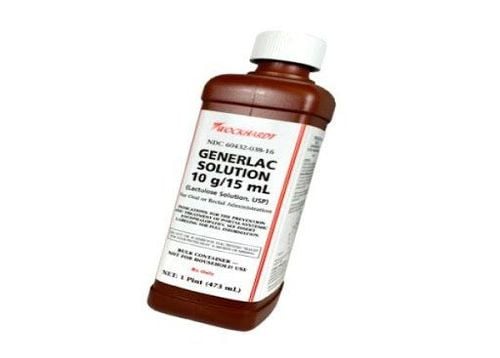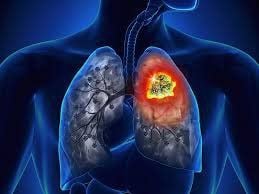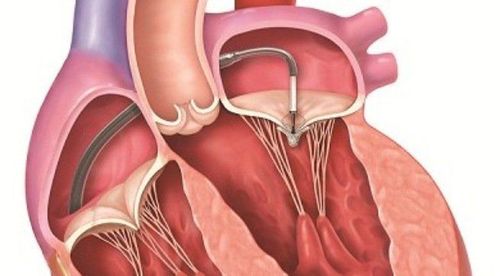This is an automatically translated article.
The article is written by Master, Doctor Tran Hong Nhat - Interventional Cardiologist - Cardiovascular Center - Vinmec Central Park International General Hospital.
Pulmonary hypertension is a condition in which pressure increases, affecting the blood vessels of the lungs and right heart. As the disease progresses, it gradually threatens the patient's life. Proper treatment can help relieve symptoms and improve quality of life.
1. Symptoms of pulmonary hypertension
Symptoms of pulmonary hypertension include:
Shortness of breath, beginning with exertion followed by difficulty breathing even at rest Fatigue, dizziness, fainting Pain or heaviness in chest swelling Legs purple lips or extremities Anxiety
2. Causes of pulmonary hypertension
Pulmonary hypertension is classified into 5 groups based on causes:
Group 1: Pulmonary hypertension
Spontaneous pulmonary hypertension Inherited pulmonary hypertension Drug-induced and toxic pulmonary hypertension Congenital heart disease Other causes such as connective tissue disease (lupus, scleroderma), HIV or chronic liver disease (cirrhosis) Group 2: Pulmonary hypertension with left heart disease
Impaired systolic function Left ventricular valvular heart disease such as mitral valve, aortic valve Group 3: Pulmonary hypertension related to pulmonary disease, hypoxemia, or both
Alveolar hypoventilation Chronic obstructive pulmonary disease Long live in place high altitude Mental development abnormalities Interstitial lung disease Sleep apnea Other lung diseases with mixed restrictive and obstructive disorders Group 4: Pulmonary hypertension due to thrombotic or chronic thromboembolic disorders
Referral Non-thrombotic pulmonary embolism (eg, due to tumours, parasites, or foreign material) Thrombotic obstruction in the proximal or peripheral segment of the pulmonary artery Group 5: Fish c other mechanism (unknown or multiple)
Hematologic disorders (Chronic hemolytic anemia, proliferative myeloproliferative disorders) Systemic disorders
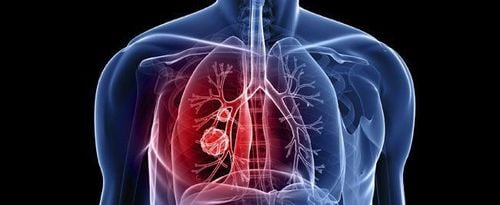
3. Risk factors for pulmonary hypertension
Risk factors for pulmonary hypertension include:
Family medical history Obesity Coagulopathy or family history of pulmonary thromboembolism Asbestos exposure Genetic abnormalities, including congenital heart disease Living in high altitude Use of narcotic drugs such as cocaine Use of certain weight loss drugs Use of certain medications to treat depression or anxiety
4. Complications of pulmonary hypertension
Right ventricular dilatation and heart failure: The heart has to work harder to pump blood through a blocked or blocked blood vessel. In the early stages, the heart tries to compensate by expanding the walls of the heart and dilating the chambers of the heart to increase the amount of blood it can hold. But these changes also deplete the heart and slowly lead to heart failure. Embolism: Pulmonary hypertension increases the risk of blood clots forming in the small blood vessels in the lungs, which is very dangerous if there is a pre-existing narrowing or blockage of the blood vessel. Arrhythmia: Pulmonary hypertension can cause cardiac arrhythmias, causing palpitations, dizziness or fainting. Some arrhythmias are malignant, potentially life-threatening. Bleeding in the lungs: Pulmonary hypertension can cause hemoptysis, which can cause severe bleeding into the lungs Pregnancy complications: Danger to pregnant women and babies
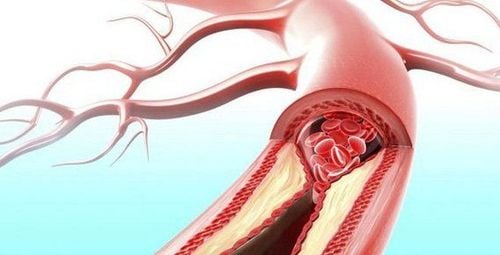
5. Diagnosis of pulmonary hypertension
Pulmonary hypertension is difficult to diagnose early because it is often not detected with screening. As soon as the condition progresses, signs and symptoms are similar to other heart and lung conditions
The doctor will perform a physical exam, ask about personal and family history, and perform tests diagnose.
Blood tests : Preliminary can help doctors identify causes and look for complications Chest X-ray : Shows enlarged right ventricle or pulmonary artery, can be used to look for pathologies Pulmonary hypertension Electrocardiogram: A non-invasive test to help detect cardiac arrhythmias. Echocardiogram: A test that helps your doctor determine how well your heart and valves are working. Used to assess right ventricular wall size and thickness and measure pulmonary arterial pressure Cardiac catheterization: If echocardiography detects pulmonary hypertension, right cardiac catheterization should be performed to confirm the diagnosis. The doctor will insert a small tube into the patient through a vein in the neck or thigh to insert it into the right heart and pulmonary artery. Cardiac catheterization allows the physician to directly measure the patient's right ventricular and pulmonary artery pressures. It also allows to assess the therapeutic effects of different drugs that may be present in pulmonary hypertension. Computed tomography (CT) computed tomography (MSCT) images help assess heart size, look for blood clots in the pulmonary arteries, and have an assessment. In-depth assessment of lung diseases that can cause pulmonary hypertension such as COPD or pulmonary fibrosis. Sometimes contrast is injected to help better assess the blood vessels Magnetic resonance: Helps assess right ventricular function and pulmonary artery blood flow Assessment of respiratory function: A non-invasive test that measures the ability to Pulmonary Exchange and Circulation Respirometry: Measures brain activity, heart rate, blood pressure and oxygen levels as well as other factors during sleep. helps diagnose sleep apnea, a cause of pulmonary hypertension Lung biopsy : Rarely done, is a procedure where a sample of lung is taken to evaluate for possible causes of pulmonary hypertension Gene testing : If you have a family member with pulmonary hypertension, your doctor may perform screening for genes associated with pulmonary hypertension. If the test is Positive, the doctor can instruct other members to perform screening
6. Treatment of pulmonary hypertension
There is currently no cure for pulmonary hypertension, but your doctor can prescribe it to help improve symptoms and slow progression. Treatment is often complex, takes a long time to determine the appropriate dose, and requires close monitoring. When pulmonary hypertension is caused by another condition, the doctor will combine treatment with the cause
6.1. Drug treatment
Vasodilators dilate and open narrowed blood vessels, improving pulmonary blood flow. One of the most commonly used:
Epoprostenol (FLolan, Velrtri): The drug is given as a continuous intravenous infusion through a connection to a small pump to carry around. Common side effects when taking the drug are jaw pain, nausea, gastrointestinal disturbances, muscle spasms, and pain or infection at the injection site of Treprostinil (Tyvaso, Remodulin, Orenitram): Use by inhalation, injection or oral route. . Common side effects are chest pain, headache, shortness of breath, nausea Iloprost (Ventavis): Used via aerosol inhalation, side effects are headache, vomiting or digestive disorders Guanylate cyclase (GSC) activation
Riociguat (Adempas) increases NO, a substance that dilates and lowers pulmonary artery pressure. Side effects are dizziness, nausea do not use during pregnancy Endothelin receptor antagonists: A group of drugs that reverse the effects of endothelin (a substance that narrows blood vessels).
The drugs in this group include: Bosentan (Tracleer), macitentan (Opsumit), ambrisentan (Letairis), which help improve symptoms, but have side effects that cause liver damage, so liver function should be checked periodically. Do not use with pregnant women Phosphodiesterase-5 enzyme inhibitor
Sildenafil and tadalafil. Sildenafil (Revatio, Viagra) and tadalafil (Adcirca, Cialis), which help widen blood vessels in the lungs, allowing blood to flow more easily. Side effects can include stomach upset, headaches or visual disturbances. Calcium channel blockers: These drugs help relax the muscles in the walls of blood vessels.
Amlodipine (Norvasc), diltiazem (Cardizem, Tiazac) and nifedipine (Procardia). However, this class of drugs is only effective in a small group of patients with pulmonary hypertension. Other drugs:
Warfarin (Coumadin, Jantoven): An anticoagulant that helps prevent blood clots from forming, causing pulmonary embolism. Using this medicine will increase your risk of bleeding. Some drugs or foods may interact with Warfarin, so inform your doctor about any other diet or medication you are taking Digoxin: Helps the heart beat stronger and helps control heart rate in case of arrhythmias . Diuretic: Helps the kidneys remove excess water from the body, helps the heart work lighter and limits fluid retention in the legs, abdomen or lungs Oxygen: Intermittent oxygen therapy helps treat pulmonary hypertension, especially for patients living in elevation or sleep apnea. Some patients need continuous oxygen
6.2. Surgical treatment
Break the atrial septum: Indicated when drug therapy cannot control pulmonary pressure. The method of opening the hole between the right atrium and the left atrium by open-heart surgery or through percutaneous interventions to reduce right heart pressure Cardiopulmonary transplantation: An option in some cases, especially for young patients age with primary pulmonary hypertension. The major problems with transplants are rejection and severe infections. Patients need to take immunosuppressive drugs to prevent rejection for life. Pulmonary hypertension is a dangerous disease, causing many complications and high mortality. When having symptoms such as shortness of breath, fatigue, chest pain, muscle weakness, abdominal distension, limb edema, etc., patients should go to medical facilities for screening.
Vinmec International General Hospital with comprehensive quality in terms of qualifications, medical equipment and medical services is a prestigious medical address for patients to choose for treatment of pulmonary arterial hypertension.
Vinmec has a team of specialists in Cardiology who are professors, doctors, specialists with high expertise and experience at home and abroad. Besides, Vinmec constantly invests and upgrades the system of modern and modern equipment and machines to support the diagnosis and treatment. Vinmec medical system is managed and operated according to international standards across the country, is a reliable medical examination and treatment address, where customers receive medical services with the highest satisfaction.
Please dial HOTLINE for more information or register for an appointment HERE. Download MyVinmec app to make appointments faster and to manage your bookings easily.






